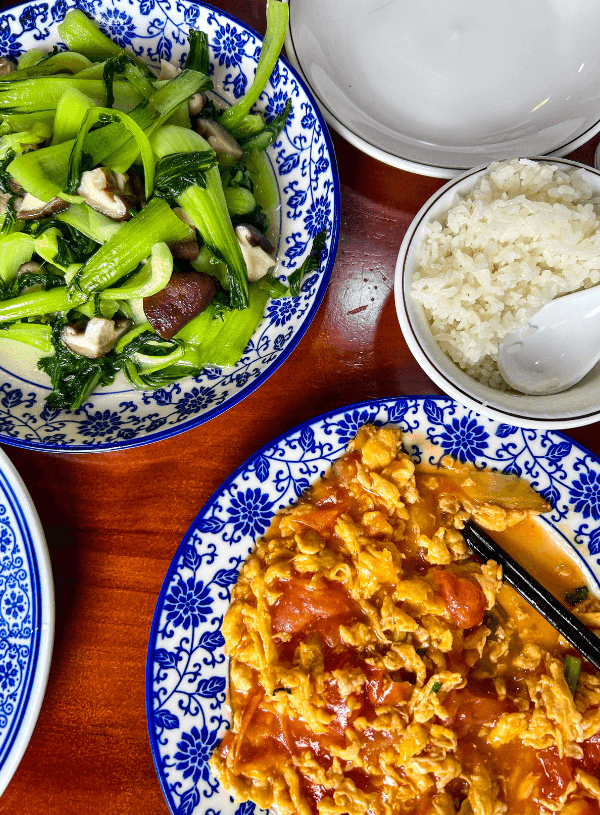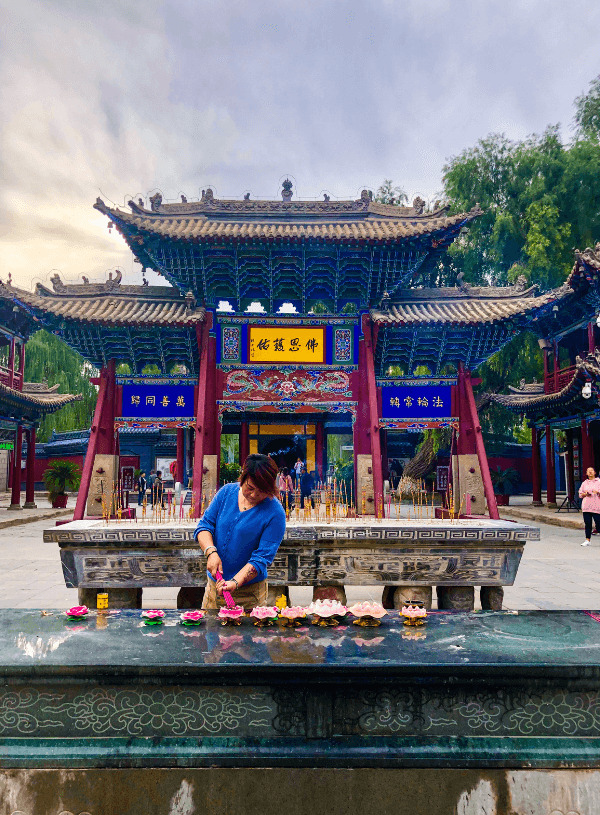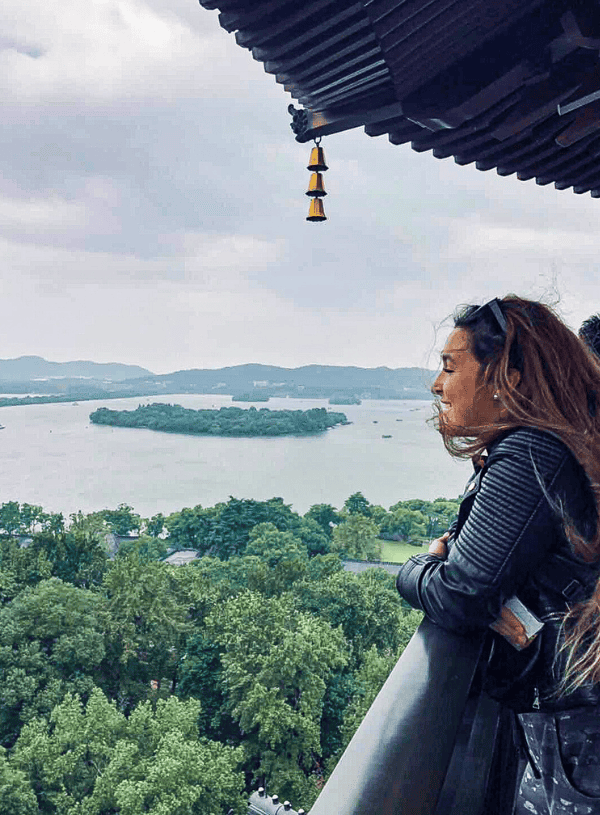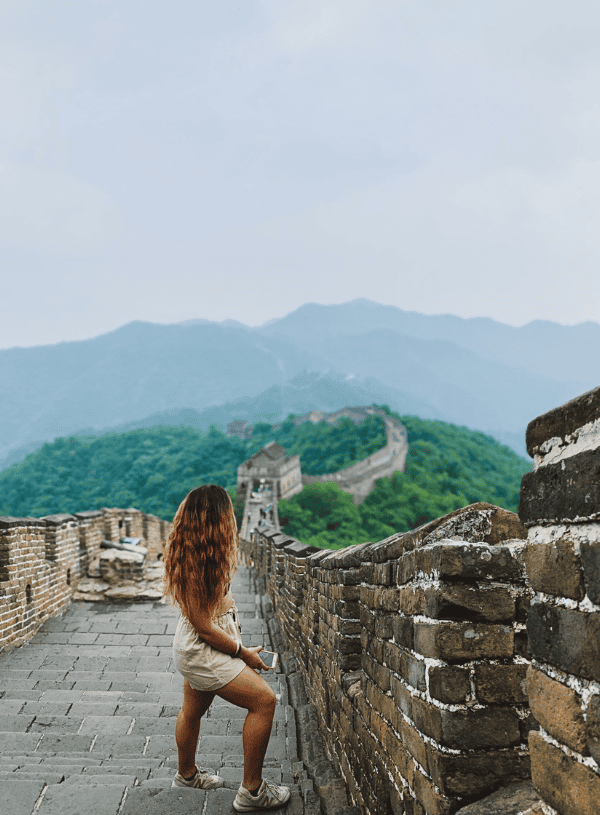If you consider a stop in Xi’an during your first trip to China, you are in the perfect place! I’ve lived in this beautiful city for over a year, and in this blog post, I will share with you the best things to do in Xian.
Xi’an is an important city in Chinese history. It marked the beginning of the Ancient Silk Road and was China’s capital even before Beijing. There’s no need to say there’s plenty of beauty to discover. Ready to explore the starting point of the Silk Road route and its top attractions? 🐉
This article may contain affiliate links. This means that if you purchase through one of the links, I may be paid a small commission at no extra cost to you. Thank you for supporting the blog, allowing me to share meaningful travel experiences with you.
Don’t have time now?📌 Pin it for later
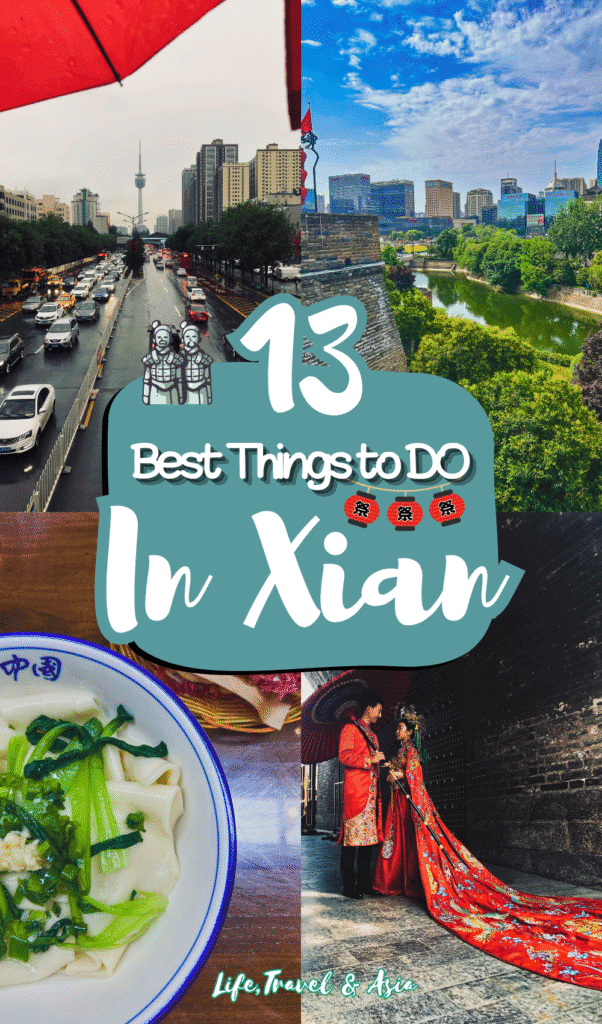
Planning Your Stay in Xian
1. Key Things to Know
2. Xian at a Glance
📍 Where to Stay: Xian City Walls South Gate (close to Yongningmen subway station) is the place to be if you want to enjoy the city center’s energy. Most important sights, such as the Bell Tower and the Muslim Quarter, are nearby.
🏠 Hotels: Fanjian Inn – Xi’an Drum Tower & Muslim Quarter
🚄 How to Get to Xian: High-speed train is the way if you are in northern or central China. High-speed trains are also convenient from Beijing and Shanghai.
🗓️ Best Time To Visit Xian: two sweet spots for visiting without the extremes of heat or cold: early fall and springtime. If you want to explore the city comfortably, aim for mid-September to the end of October or March to May.
📆 I suggest spending at least two days in the city. All the main landmarks within the City Walls are close to one another. Plan one day more for any day trip
If you’re looking for other information to plan your stay in Xi’an, check out my Xi’an Travel Guide. You’ll find everything you need to know: other hotels, how to navigate the city, and how to plan your itinerary.
Is Xi’an Worth Visiting?
Xian is one of the oldest cities in China, and its rich past makes it a must-visit stop to explore if you’re visiting China for the first time. In ancient times, this city was the starting point of the Ancient Silk Road, making it one of the most culturally and economically prosperous cities in Imperial China.
During this period, the Chinese and Hui Muslim minorities came into contact for the first time. You’ll still find many delicious Muslim restaurants, and let’s not forget Muslim Street with its great Mosque.
Xi’an is also home to China’s best, well-preserved city walls, beautiful museums, and many other historical sites. I’ve loved living here. It’s a big city, home to 12 million people, but for some reason, it feels more livable and compact compared to Beijing and Shanghai.
13 Best Things to Do in Xian
I saved all the locations and entertainment mentioned in this blog post on this map.
1. Sunset Bicycle Ride on the City Wall
If your accommodation is close to the city center, you will immediately notice the massive city walls, creating a rectangular border around what once was China’s ancient capital. The Xian City Wall, built during the Ming Dynasty, is China’s best-preserved ancient city wall. Around it, you will find lovely scenery with lush green parks and artificial lakes.
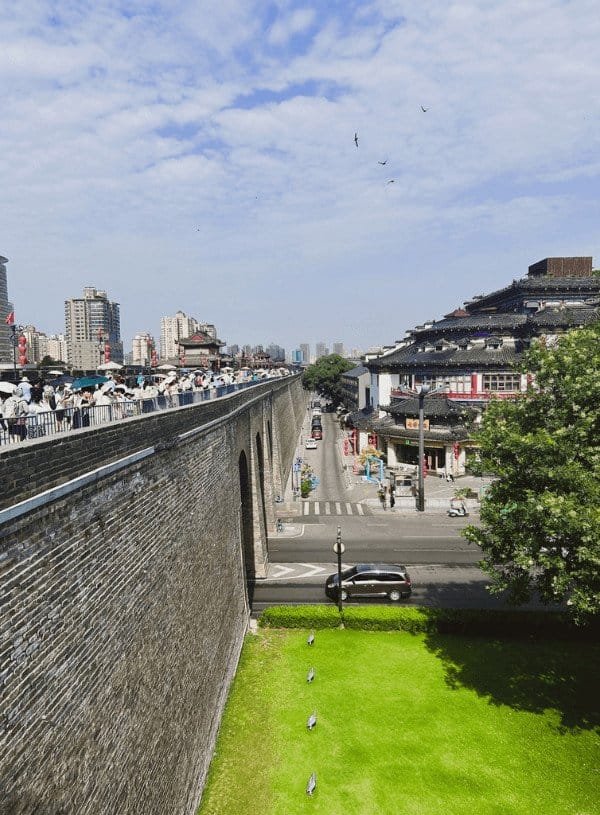
You can experience this location in a bunch of different ways. However, the sunset bicycle ride is one of the best things to do in Xian.
This will give you the best view of the city as it comes alive with lights. The city walls’ towers will also light up from sunset to around 10 pm.
On top of the wall, you can rent bicycles and cycle around. The view from the city walls is what I love about the ride: the blend of old and modern architectural styles within and outside the city walls.
If you decide to cycle for the 14 km of the perimeter, be well-rested because it is a good workout requiring a shower right after.
2. Street Food Tour at Huimin Jie (Muslim Street)
🚶How to get there: Muslim Street is easy to reach within the City Walls. It’s located northwest of the Bell Tower. It’s a 13-minute walk.
Spending an early evening at the Muslim Quarter is a great way to witness the beautiful blend of Muslim and Chinese culture.
The Muslim street is located North of the Drum Tower; most Muslim communities are here. This area is vibrant in the evenings, with Chinese and tourists wandering around, exploring the peculiar shops, and testing some Xi’an street food snacks.
This is the perfect place to try the Rou Jia Mo, a Chinese street food snack I love. It is a pork meat sandwich.
The bread is unleavened but combines perfectly with flavourful and juicy pork meat. Another thing you can try is the lamb skewers. They’re tasty, with cumin seasoning on top, and sometimes very spicy!
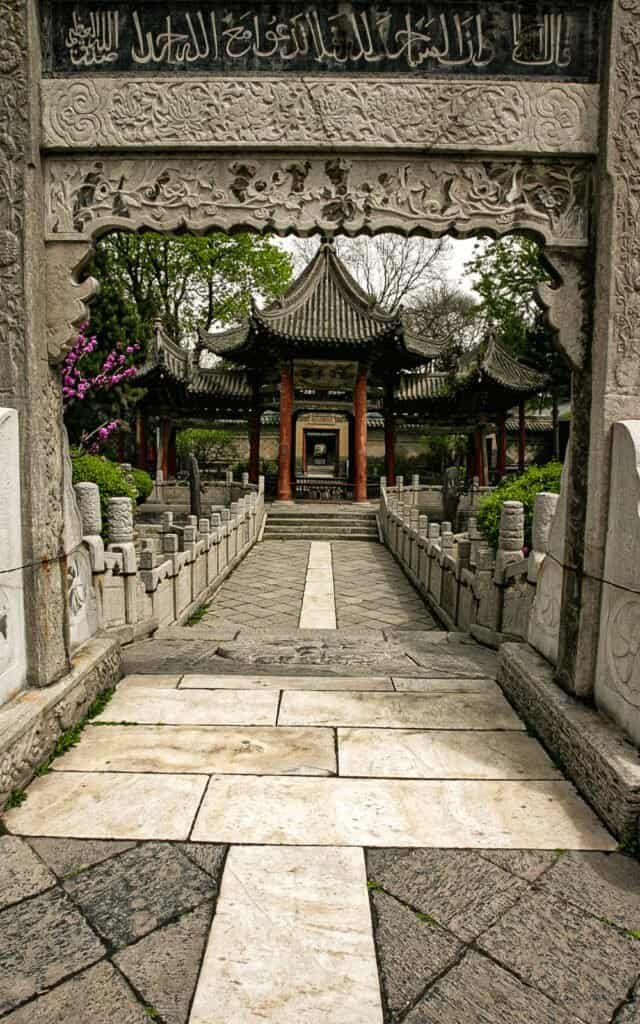
This area is home to the Great Mosque of Xian. The Mosque is the largest premodern Mosque in China, with more than 20 buildings.
It is surrounded by a beautiful garden, which creates a spiritual and calming atmosphere. Unfortunately, as it’s an active place of worship for the Muslim community, the prayer hall is not accessible to visitors.
However, you can still explore the remaining buildings. The Mosque is an important heritage site for the city of Xi’an as it represents the ethnic and religious diversity that the city had in the past (and today as well).
3. Taste the Iconic Shaanxi’s Biang Biang Noodles
If you are looking for a typical Xian dish, try the Biang Biang Noodle. This type of noodle is much larger, like a belt size, and thicker than regular noodles (and much more difficult to eat).
The dish has gained popularity in China because it’s delicious and because the Chinese character for the sound Biang is one of the most difficult ever.
The standard variant comprises 58 strokes and is very complex to write.
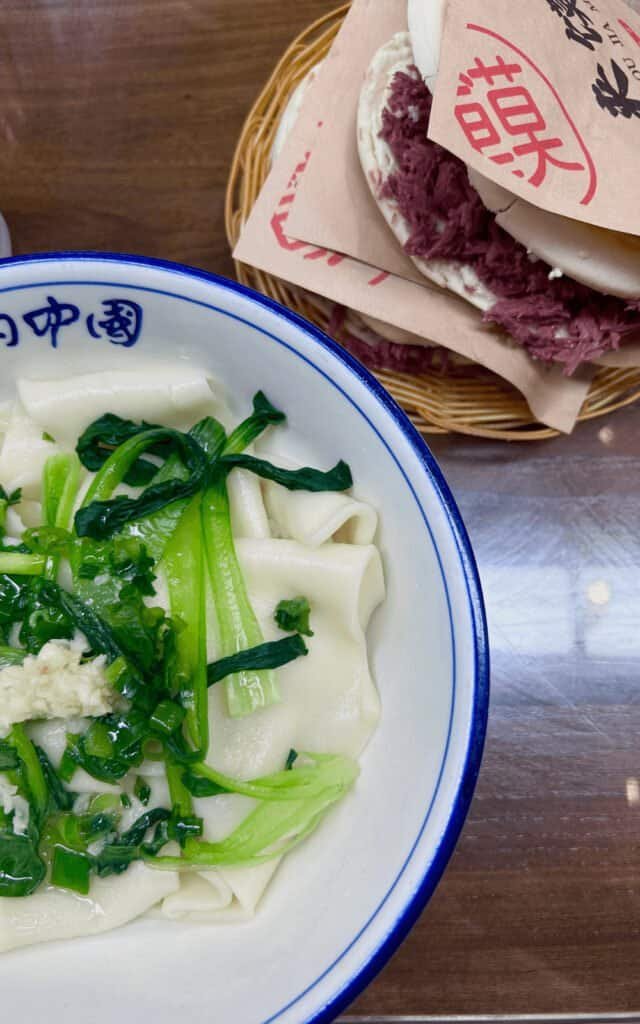
You can eat delicious Biang Biang Noodles at First Noodles Under The Sun, close to the Big Goose Pagoda, or stop at any place on the Muslim street.
4. Feel the Heartbeat of Xian at the Bell Tower (Better if In The Evening)
One of the best things to do in Xian is a stroll to the Bell Tower! The Bell Tower of Xian was built during the Ming Dynasty, and it’s the exact point, within the city wall, where all the streets seem to meet.
The magnificent building is at the center of a road intersection and only accessible through an underpass.
This is the heart of the city. Around the Bell Tower, you will find the town’s busiest streets, where many shops, restaurants, and people live their daily routines.
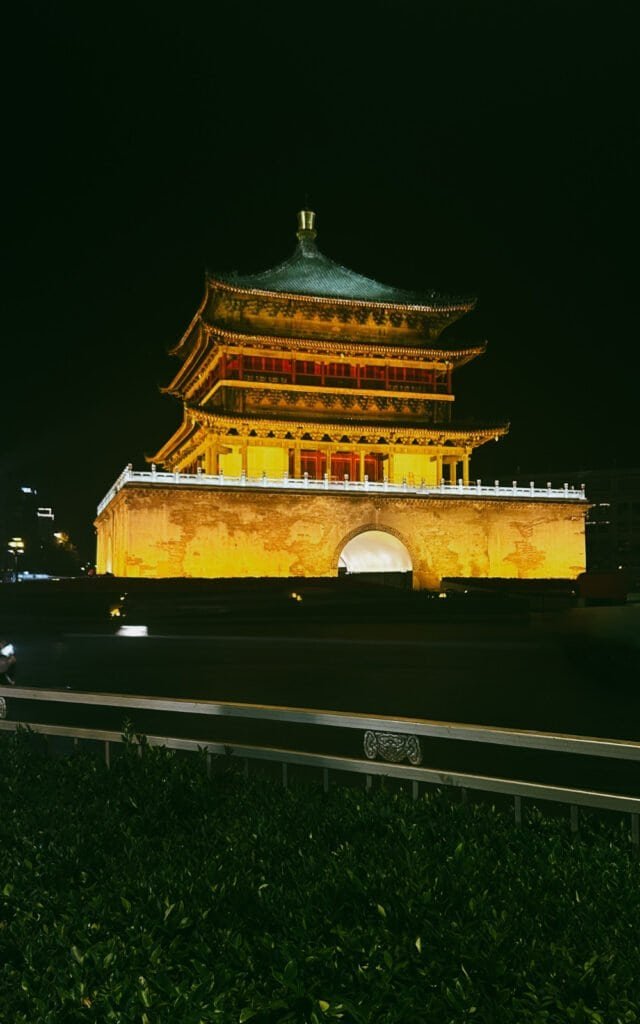
The bell tower can be visited during the day, and there are musical performances in the morning and afternoon.
However, I think this place is fantastic at night. It is lighted with lights that highlight its beautiful red and golden colors. Moreover, there’s less traffic at night, allowing you to take better pictures. It’s worth a stop after dinner!
5. Visit the Guangren Temple
If you are brave enough to cycle for 14 km of the Xi’an City Walls, you will notice a small and highly mysterious temple right at the corner where the West meets the North side.
This is the Guangren Temple, the only Tibetan Buddhist Temple in the Shaanxi province.
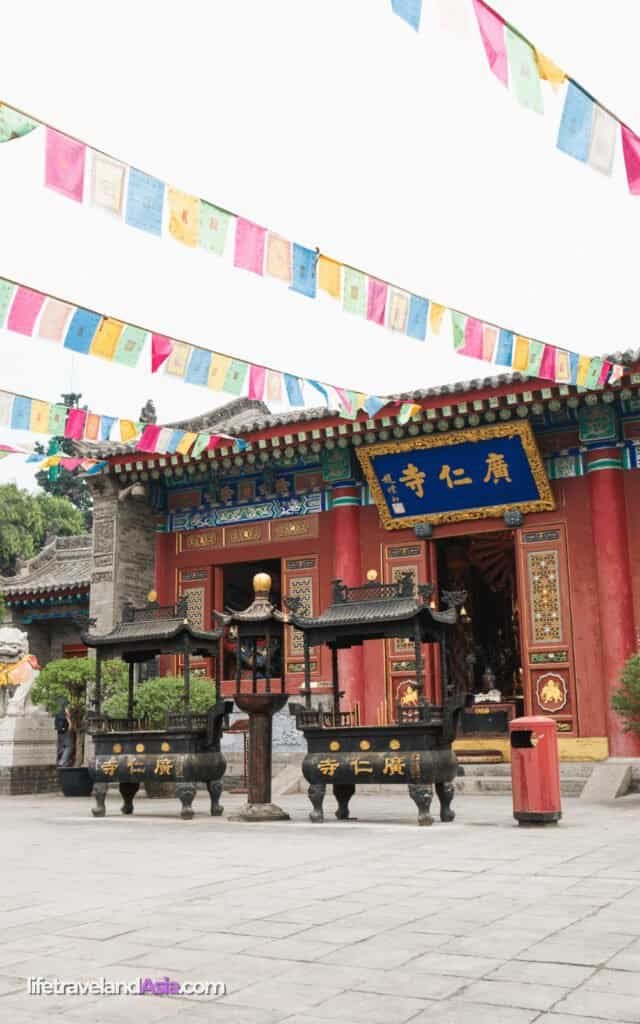
Like all Tibetan temples, this one holds extremely spiritual but calming energy. If you are looking for a peaceful and calm escape, this temple is worth a visit.
The temple hosts several Buddhist treasures, including the Thousand Buddhas Hall and the Buddhist Texts Library.
6. Stop at Xian’s Most Famous Landmark: The Big Wild Goose Pagoda
🚌 How to get there: the Big Wild Goose Pagoda is 4km Southwest of the City Walls. From Hepingmen Subway station (close to the city walls), take metro line 4 to Dayanta.
Also called the Giant Wild Goose Pagoda, this UNESCO World Heritage Site is undoubtedly the landmark of the city you will find on every magnet—and for a reason!
It is exceptionally well preserved and names a beautiful area that comes alive in the evening called Dayanta (Big Wild Goose Pagoda in Chinese).
The 7-storey pagoda held Buddhist sutras (ancient written teachings) brought to China from India. Today, inside, you can find engraved statues of Buddhas. The ticket for the Pagoda is around 10 USD.
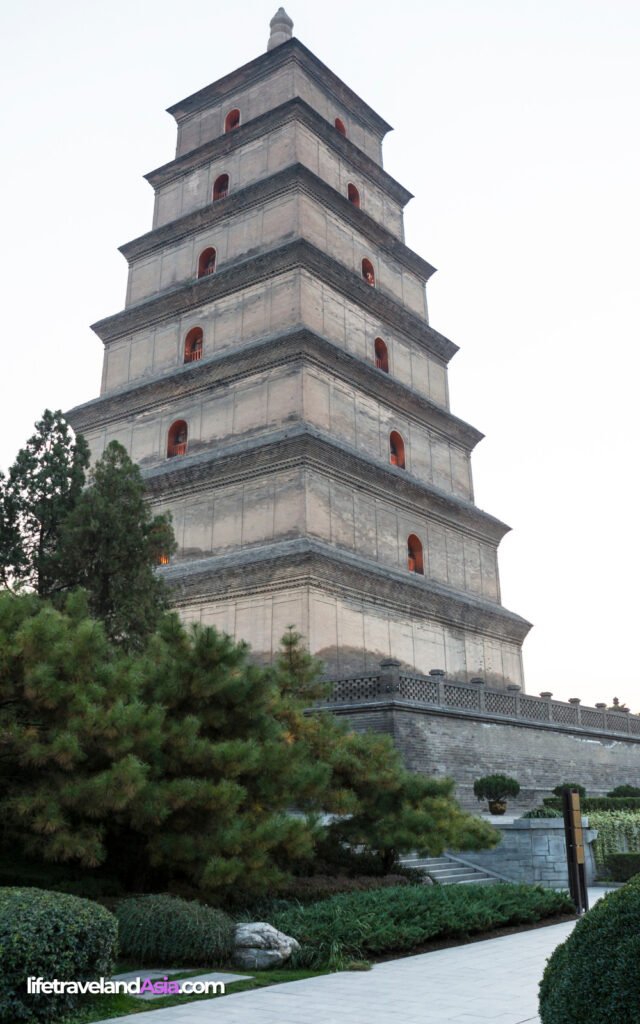
Besides the Pagoda, you need to explore Dayanta. It’s a great area to get lost and discover the life of locals. Plenty of Chinese families wander around, particularly during Summer weekends.
There are plenty of restaurants too! It’s a great place to spend one evening of your Xi’an stay. (Don’t miss the Fountain Show, which is close to the Pagoda).
7. Discover Xian’s Taoist Site, the Temple of Eight Immortals & and Wander Through the nearby Market
Located East of Xi’an City Walls (almost opposite to the Guangren Temple), the temple of the Eight Immortals is an active place of Taoist worship.
It was built during the Song dynasty, and plenty of monks pray in its beautiful gardens and halls. The temple courtyard houses a lovely series of paintings representing Taoist mythology.
If you are looking for a place that feels mystic and peaceful at the same time, this is a site to check out.
Moreover, on the opposite streets, there’s often an antiquaries market where you will find the weirdest objects and maybe some unique souvenirs.
8. Learn about Xian and Shaanxi’s History at the Xian Museum and Shaanxi History Museum
Shaanxi is the heart of Han culture and the beginning of Chinese civilization. For this reason, discovering the history of the Shaanxi province means diving deeper into Chinese cultural and historical heritage as a whole.
Xian Museum
The Xian Museum collects some of the most significant relics dating back to the beginning of Chinese history. It is located near the Small Goose Pagoda and within the Jianfu Temple Site.
Remember to bring your passport for a free ticket. In the museum, you will find ceramics from the Han Dynasty, Ming Dynasty seals, jade artifacts, and a large-scale model of the ancient Xian.
The small goose pagoda stands on the grounds with its small 15 small tiers. The pagoda is used to collect Buddhist scriptures, and it can be visited by purchasing a ticket. You can also take a stroll in the Chinese-style gardens around the Pagoda.
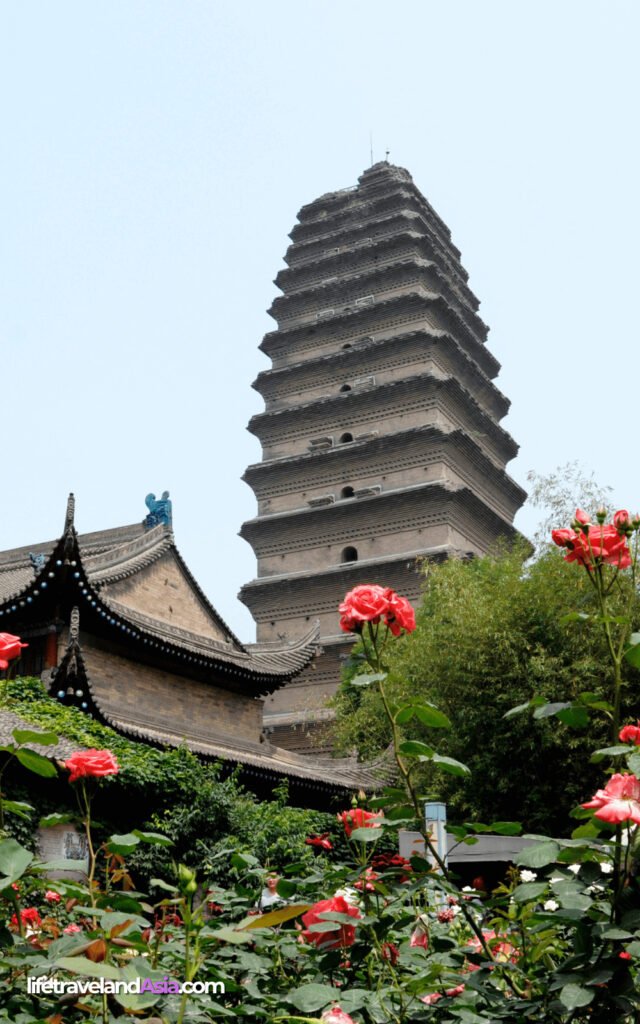
Shaanxi History Museum
The Shaanxi History Museum is spacious and modern. It contains over 370,000 relics of ancient populations inhabiting the Shaanxi region.
You will find ceramics, bronze relics, jade objects, coins, and calligraphy manufacturers. The museum’s highlights include paintings from the Tang dynasty and four original terracotta warriors on the ground floor.
The museum has permanent, temporary, and special exhibitions that change annually.
9. Fountain Music Show at Dayanta
The fountain show is top-rated among Chinese and tourists near the Giant Wild Goose Pagoda. In particular, when school is over, that place becomes exceptionally crowded with families.
Avoid the weekends if you can. The fountain show is free and particularly suggestive in the evenings.
The evening shows are every day at 20:30. Make sure to arrive in advance to find a good spot to capture the fountain dance.
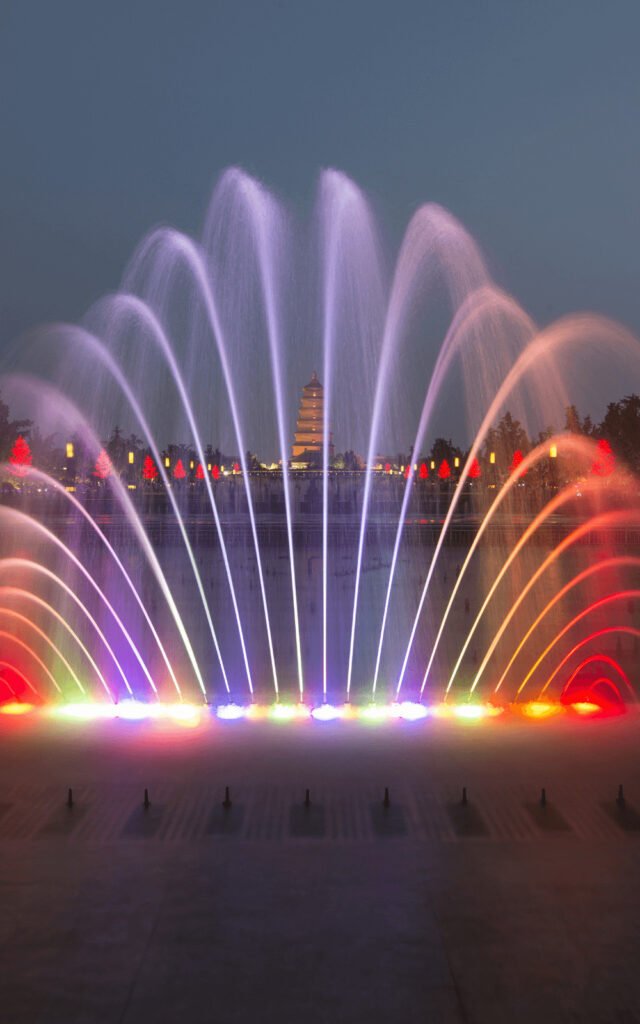
From the fountain show and the Giant Wild Goose Pagoda, you can take a 20-minute walk to the Tang Paradise.
This area is lovely when lighted up in the evenings, and it’s a park bringing the glory of the Tang Dynasty back to life.
You will wander around beautiful Tang-style buildings, gardens, and live performances here. Of course, the area was recently built and created, but it’s a place to check out and discover the old-style Chinese vibe typical of the Tang Dynasty.
10. Attend the Iconic Tang Dynasty Show
I’ve always overlooked this show, but during my last trip to Xi’an, I wanted to give it a try. This experience is mainly created for foreign tourists, but you will also find Chinese people enjoying the show.
Buying a ticket for this show is worth the money. The first booking option below is the simple ticket you can purchase.
You will not understand what the Chinese presenter says at the start. However, the dances, the music, and the colorful customs speak for themselves.
The show blends beautiful dance movements, suggestive music, and incredible dynamism. You can tell that the dancers have been rehearsed for hours to achieve such synchronicity and perfection. It’s truly extraordinary.
You can also have dinner during the show to save time, but I prefer looking for some homemade tiny restaurants when I am in China. The Tang Dynasty Palace is easy to find and is very close to the Xi’an Museum and Small Goose Pagoda.
11. Day Trip to The Terracotta Warriors
🚌 How to Get There: Located about 40 km outside the city center in the Lintong District, getting there is easy. From Beidajie Subway Station, you take line 1 and get off at Fanzhicheng. At the Fanzhicheng Bus Station, you take the N. 306 tourist line 5 bus. The journey will last around 2.30 hours.
🎟️ Tickets: If you’re going the bus route, I recommend booking your tickets on Trip.com for the site.
The Terracotta army doesn’t need any introduction. It’s one of China’s most renowned UNESCO World Heritage Sites, which is why Xi’an is internationally known.
The site is not close to the city center, but it’s located around 40 km in the Lington District. It is divided into three pavilions. However, the main one is the most extensive and exciting to discover. Here, you will find thousands of warriors representing the armies of the first Chinese Emperor.
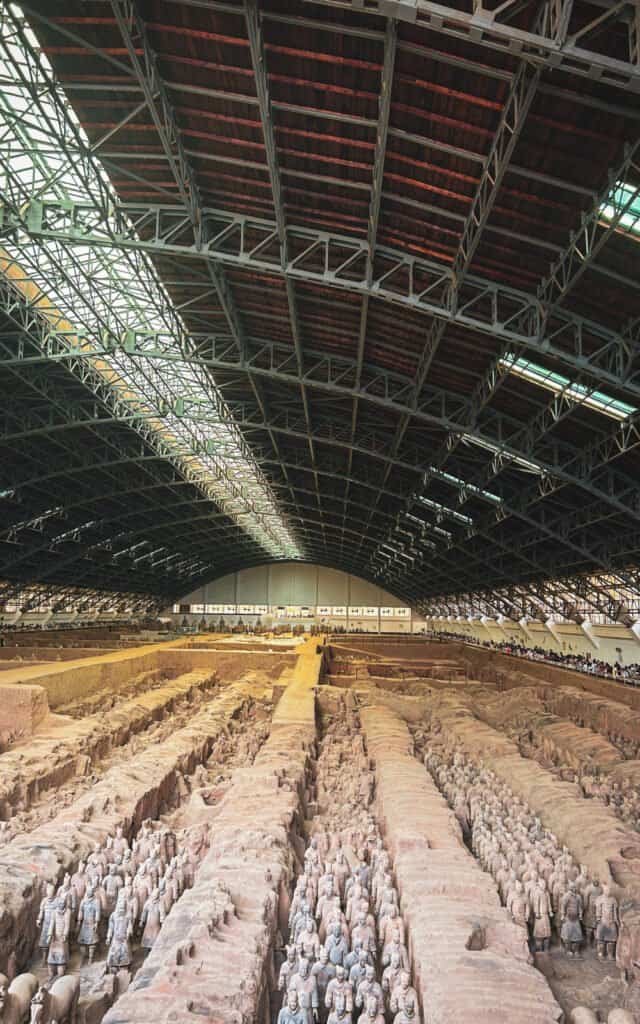
The function of the military was to protect him in the afterlife. Local farmers found the sculptures, and new parts of the army are still being discovered today.
The sculptures’ differences will blow your mind: they all have different physical features and facial expressions (as if a real army had posed for them).
Chinese tourists crowd the site throughout the year: try to opt for a weekday, and if you can’t, no worries. The main hall is so big that it allows everyone to take pictures and capture the beauty of the warriors from up close.
Set aside at least 4-5 hours to explore the site, plus another two hours for transportation.
12. Visit The Tomb of Emperor Jingdi
One of the most underrated sights around Xian, the Tomb of Emperor Jingdi, shows another side of an Emperor’s daily life.
He was much more focused on improving the lives of his subjects—much in contrast with what you will see in the Terracotta army.
Here, you will also be much less surrounded by noisy crowds of tourists, which is a pro that can motivate you to visit this site.
On this site, you will find a Museum displaying many terracotta figurines representing daily life characters and moments.
Then, you have the tomb. Here, you can walk over the ongoing excavations thanks to a glass floor that lets you view the relics properly. The best way to reach the site is probably by taxi from the city center. You can ask your accommodation’s staff members to book one for you.
13. Climb one of the Sacred Mountains of Taoism: Mount Hua
🚌 How to get there: The easiest way to get to the base of Mount Hua is to take the high-speed train from Xi’an North Train Station and get off at Huashan North Station. You can take a short taxi or the shuttle bus to the site’s ticket office. The entrance ticket is around 160 RMB.
📆 When to go: Mount Huashan is a no-go from late October through March. Mark your calendar for early fall, spring, or summer.
One of the sacred mountains for Taoism, climbing Mount Huashan is a must-do activity if you are in Xian. These peaks used to be home to sages and Taoist mystics, but today, many tourists climb the mountain in early fall, spring, and summer.

Huashan is well-known for its beautiful natural scenery: panoramas of green mountains, steep ridges, and pine trees surrounded by sacred temples, including the Jade Spring Temple near the base and the Golden Lock Pass, where travelers leave locks as a symbol of good luck.
The views from the summits—especially the East Peak, famous for its sunrise—are unique. You have cable car options if you don’t want to climb the Mountain. However, I genuinely believe that making the effort to climb it makes the moment when you reach the peak even more special.
There you go! These are the 13 top things to do in Xian. Hopefully, this blog post inspired you to visit this gem of a city in China.
Did you find it helpful? 📌 Pinning is caring!



